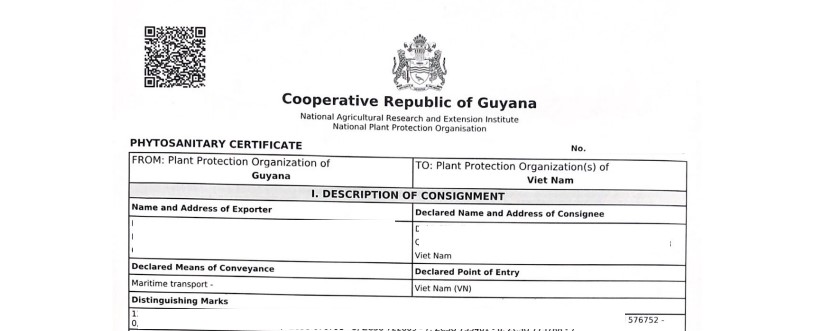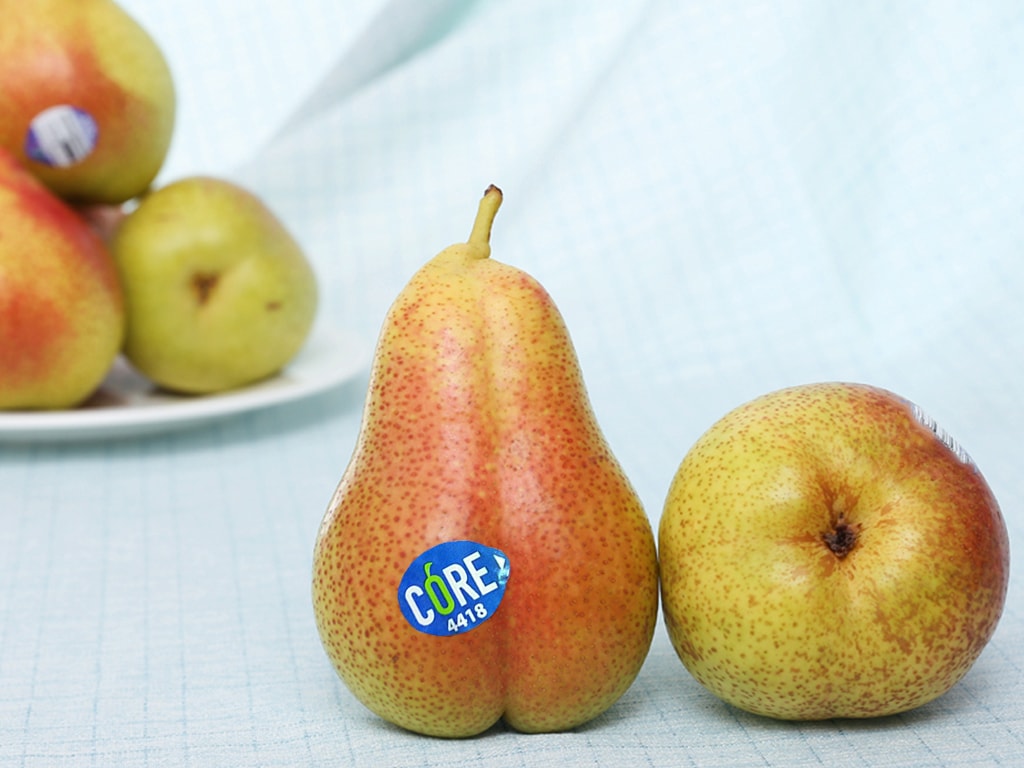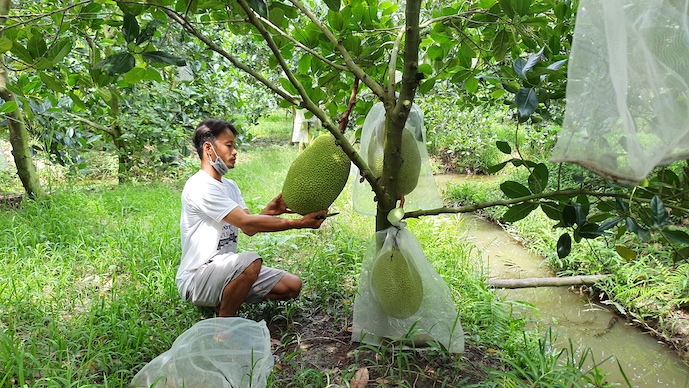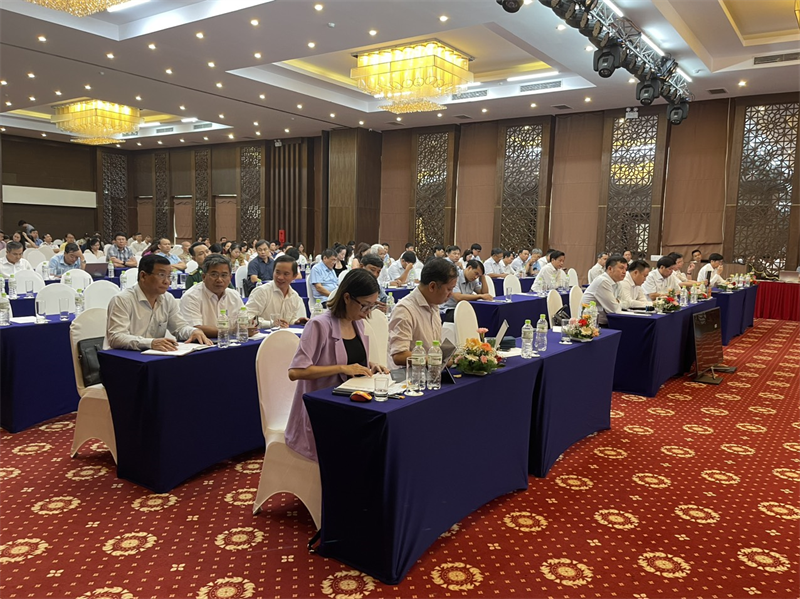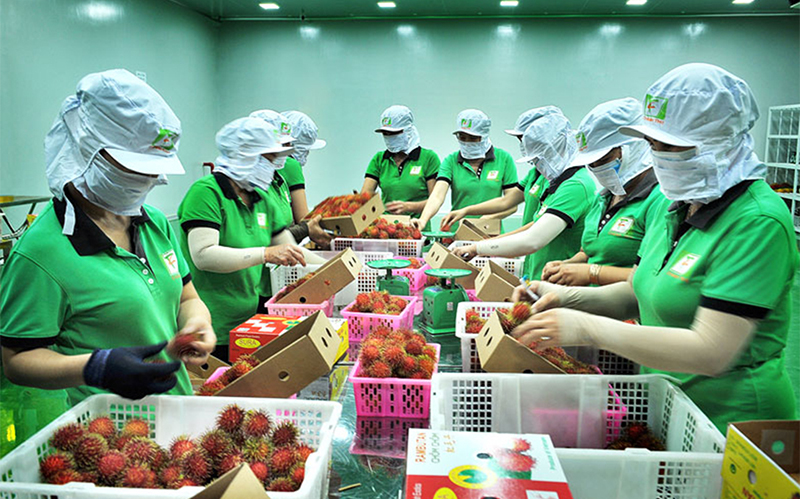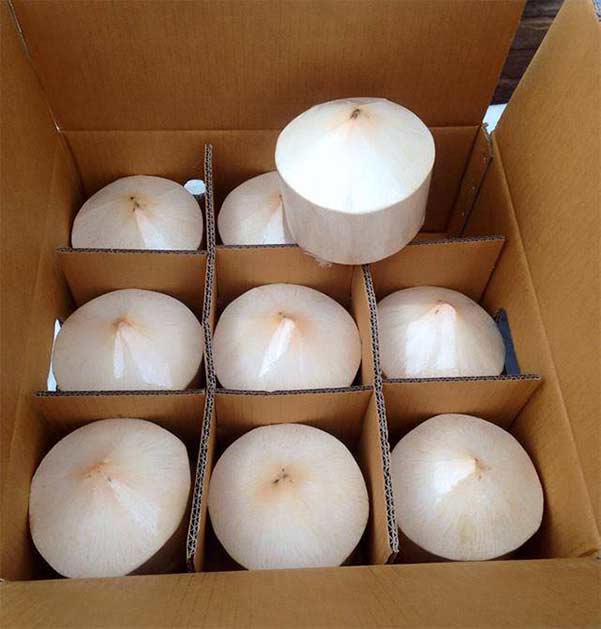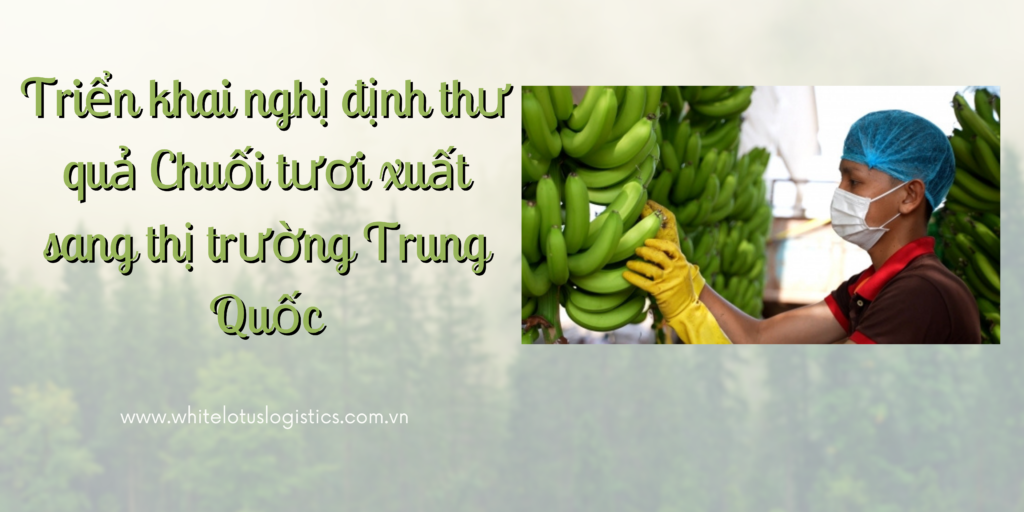At the recent conference to disseminate new regulations on mango exports to the Japanese market in An Giang and Dong Thap, Ms. Nguyen Thi Thu Huong, Deputy Director of the Plant Protection Department (VTVTV), said that the number of codes The number of growing areas managed by local Sub-Departments is currently very large.
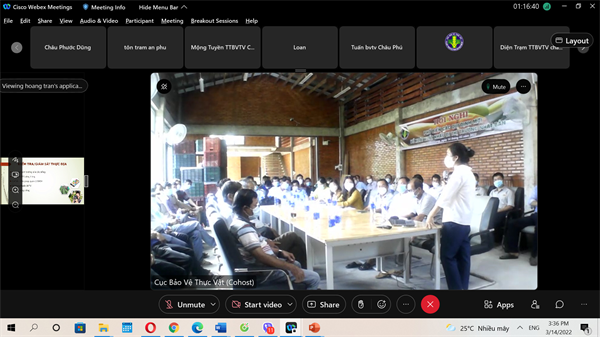
Conference to disseminate new regulations on exporting to the Japanese market held in person and online on March 14, 2022 in An Giang
From the perspective of helping people further improve their awareness of growing area codes, as well as the farming techniques "1 right, 5 reductions", "3 reductions, 3 increases"..., the Plant Protection Department advocates gradually handing over the codes. has been issued from the Branch to the district (District Plantation and Plant Protection Station, District Department of Agriculture and Rural Development).
During the transfer process, the local Sub-Department needs to coordinate with district-level units to monitor the growing area codes according to the regulations and requirements of the importing country.
Every year, Provincial and City Sub-Departments will check and review the monitoring of issued growing area codes, with a rate of about 10 - 15% of records managed by the District Crop Plant and Plant Protection Station.
Provincial and city-level departments will only inspect growing areas that are proposed for new codes. "In this process, we need to increase training for farmers and businesses to change perceptions," Ms. Huong said.
According to the Plant Protection Department, the Department's new orientation will help farmers better understand and grasp export requirements. In the context of countries requiring increasingly high quality, food hygiene and safety, packaging specifications, this approach will help Vietnam's agricultural sector develop more methodically and sustainably.
Along with answering questions from delegates and farmers, Ms. Huong also introduced delegates how to look up pesticides using pesticide lookup software on their phones. Operations to access fertilizer database software and new regulations on plant quarantine of countries on the Plant Protection Department website are also guided by Plant Protection Department staff.
By the end of 2021, the entire An Giang province was granted 236 codes for 123 growing areas (mango, rice, jackfruit and banana) for export. Among them, mango has 195 codes of 82 growing areas (area of 5,146 hectares).
This year, the Plant Protection Department organized an online training class on rice growing area codes for 84 students; 14 training classes for 140 officers of the District Plantation and Plant Protection Station, Agricultural Extension Station and district officers; 20 training classes for organizations, individuals, and farmers with 200 people.
In parallel with promoting exports, the Department of Plant Protection also coordinated with the An Giang Department of Agriculture and Rural Development to deploy a demonstration model of biological pesticides in the field, or "Field of Dreams", to contribute to protecting the environment and creating good habits. for farmers to reduce the amount of chemical pesticides.
The plant protection industry in An Giang has also deployed 4 fertilizer use models in Chau Thanh, Tri Ton, Cho Moi and An Phu districts on the varieties OM 18, OM 5451 and VNG-20. As a result, the models use 100 - 130 kg/ha less fertilizer than the farmers' control fields, helping to reduce production costs by about 3.5 - 4 million VND/ha.
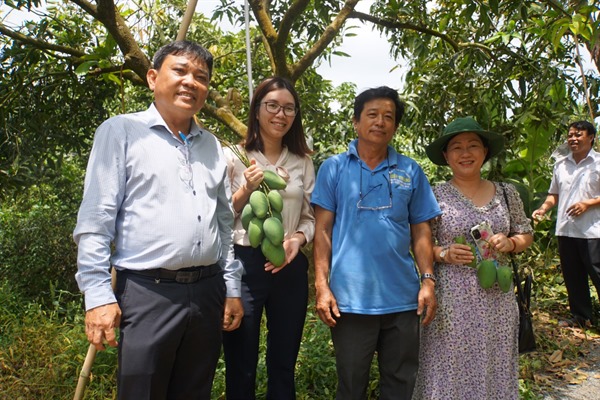
Officials of the Plant Protection Department and officials and farmers inspect mango growing areas in An Giang
In 2022, the Department of Plant Protection will coordinate with the An Giang Department of Agriculture and Rural Development to organize 5 training classes on rice, fruit trees and vegetables. In addition, the models "No footprint", "Sustainable rice farming", "Profit model" will continue to be implemented by the Department.
At the Workshop on March 14, one of the issues of concern to An Giang agricultural workers was Cat Chu mango. This is a product that Japan has officially opened since 2015, thanks to the efforts of the Plant Protection Department in negotiating, gradually removing technical barriers, and guiding localities to set up raw material areas to meet the requirements. regulations on plant quarantine and food safety
In order for mango growing areas to maintain meeting export conditions to Japan, the Plant Protection Department recommends that people constantly improve their techniques and production levels, and have a certain understanding of market regulations. This.

